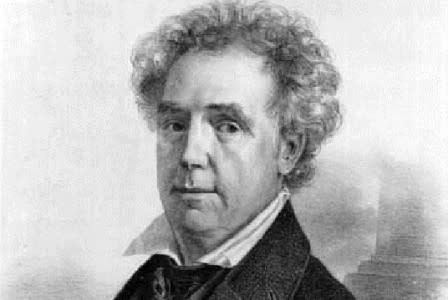The day the Senate picked a U.S. vice president on its own
One of the little-understood provisions of the 12th Amendment allows the U.S. Senate to name a Vice President under very limited circumstances. It happened once, on this day in 1837.
Richard Mentor Johnson in 1840
In the 1836 presidential election, Martin Van Buren won the election with 170 electoral votes, defeating William Henry Harrison and three other candidates. Van Buren and his running mate, Richard Mentor Johnson, were hand-picked by outgoing President Andrew Jackson to continue his polices.
Van Buren, a master politician, was able to navigate his way through a tough election. Johnson had been a controversial figure for several reasons, but Jackson and others thought the Kentucky native would balance the ticket.
Instead, Virginia rejected Johnson and the state’s 23 vice presidential electoral votes went to William Smith of Alabama. Johnson needed 148 votes to become Vice President in the election; instead, he received 147 votes, falling one vote short.
Johnson had troubles in Virginia and also in Kentucky because of his personal life. Johnson had fought with Harrison in the War of 1812 and there were claims from his supporters that Johnson had personally killed the Indian leader Tecumseh during the Battle of Thames in 1813.
The vice presidential candidate was dogged by other claims during the 1836 of a more scandalous nature, at least in the South. After Johnson’s father died, he inherited a slave, Julia Chinn, who was an octoroon. Chinn became Johnson’s common-law wife, since the couple couldn’t marry under miscegenation laws in effect, and had two children before Chinn died in 1833. Johnson then had two other relationships with women who were black or mixed race.
On February 8, 1837, the Senate convened under the terms of the 12th Amendment under the following provision: “The person having the greatest number of votes as Vice-President, shall be the Vice-President, if such number be a majority of the whole number of Electors appointed, and if no person have a majority, then from the two highest numbers on the list, the Senate shall choose the Vice-President.”
In the 1800 and 1824 contingent elections, the House decided who would be President, and in the case of Aaron Burr in 1800, the Vice President. The candidates were Johnson, and Harrison’s running mate, Frances Granger of New York. Johnson won the contingent vote, 33-17, on party lines, and became the ninth Vice President.
Johnson’s four years as Vice President were marked by an unusually high number of tie-breaking votes required in his role as president of the Senate. But Johnson also frequently went home to manage his tavern in Kentucky.
Van Buren decided to run for re-election in 1840 with no vice presidential running mate after his experience with Johnson. But Johnson campaigned for re-election on his own and received 48 electoral votes for Vice President, compared with Van Buren’s 60. Harrison and John Tyler received 234 electoral votes to win the election easily.
After leaving Washington, Johnson spent a decade trying to continue his political career, until he died at the age of 70 in Kentucky in 1850.
Recent Historical Stories on Constitution Daily
Ronald Reagan’s big impact on the Supreme Court



